Erasmus is truly an opportunity to make memories, meet new people and get introduced to different cultures. I was lucky to have made so many friends from all over the world, from the hot regions of Peru and Ecuador to multicultural Japan and South Korea. One of the most interesting cultural topics came up, however, during a conversation with one of my closest friends during the Erasmus period, Alessandra -Alex, for short-. Alex is half Italian and half Bolivian and currently lives in northern Italy.
The topic of interest came into play while discussing her Bolivian origins. You see, in parts of South America, there is a population called the Quechua people. The Quechuas are one of the remaining indigenous populations that live in the Andean mountains of South America (source: https://study.com/). Alex feels deeply in touch with her Quechua ancestors and tries to keep that connection alive, even by learning the Quechua language. Fascinated by her passion and love for the tribe, I decided to ask her a few questions, so that we could all learn a little more about this interesting topic.
So, Alex, first of all, thank you so much for agreeing to do this with me. Would you like to tell us a bit about yourself and the connections you have with the Quechua people?
Surely, so I was born and brought up in Italy, but my mother’s origins have always fascinated me. Due to the full immersion in her job and the huge effort she put into learning the Italian language and culture, she did not really teach me much about her origins and roots.
Yet, my curiosity was so profound that I started searching for the information myself: it was not easy, during all these years I discovered with deep sorrow that South American history and ancient population are not studied as much as the Europeans one, therefore there is very little information as it is for the interest.
This didn’t stop me, though.
I know my mother was struggling to integrate into Italian society, not easy at all, but I am more than sure that she wants me to embrace my culture as much as I crave it.
I might have lived more in Italy than in Bolivia, but this does not mean that I am less Bolivian: I am very proud of my roots, and nobody is going to take that away from me.
My first contact with Quechua happened when I first travelled to Bolivia to meet my grandparents. I really enjoyed talking with my grandparents about languages, since it’s the subject I am studying, my grandparents started to jokingly argue about two indigenous languages that still survive in South America: Quechua and Aymara.
My grandmother says she prefers Aymara because, in the region where they live it’s more spoken, my grandad argues that Quechua is a more beautiful language and also more talked in South America. Since I’ve always been curious about the Inca population and history, Quechua stimulated my already great curiosity.
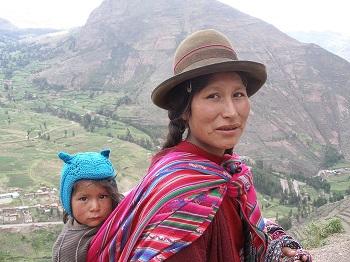
Quechua woman and child
source: study.com
When referring to the Quechua tribe, to which people are we referring?
When people talk about Quechua, it would be wrong to think about a population that is only in one nation. According to Britannica Encyclopedia: “Because of the lack of distinct anthropological identity between Quechua speakers and those of Quechua heritage, population estimates in the early 21st-century range between 13 million and 16 million.”
There are different Quechua-speaking ethnic groups in Perú, Bolivia, Argentina, Chile, Ecuador, Colombia, and Argentina.
The ethnic groups present in Bolivia are mainly two: Kallawaya and Qulla, the latter one being the one in the region where my grandparents live.
On this site, you can find a map that very clearly shows the distribution of different ethnic groups in Bolivia: Joshuaproject.net
Could you inform us about the history and the culture of the people?
As already said, there is not much information concerning the history of this population, we also must remember that the Quechua language also has many dialects that are not similar to each other.
Large landowners stole all or most of the land and drove the Native population into servitude, beginning with the colonial era and escalating when the South American nations got independence. Indigenous farmers have periodically revolted against harsh exploitation circumstances, but have been violently subdued.
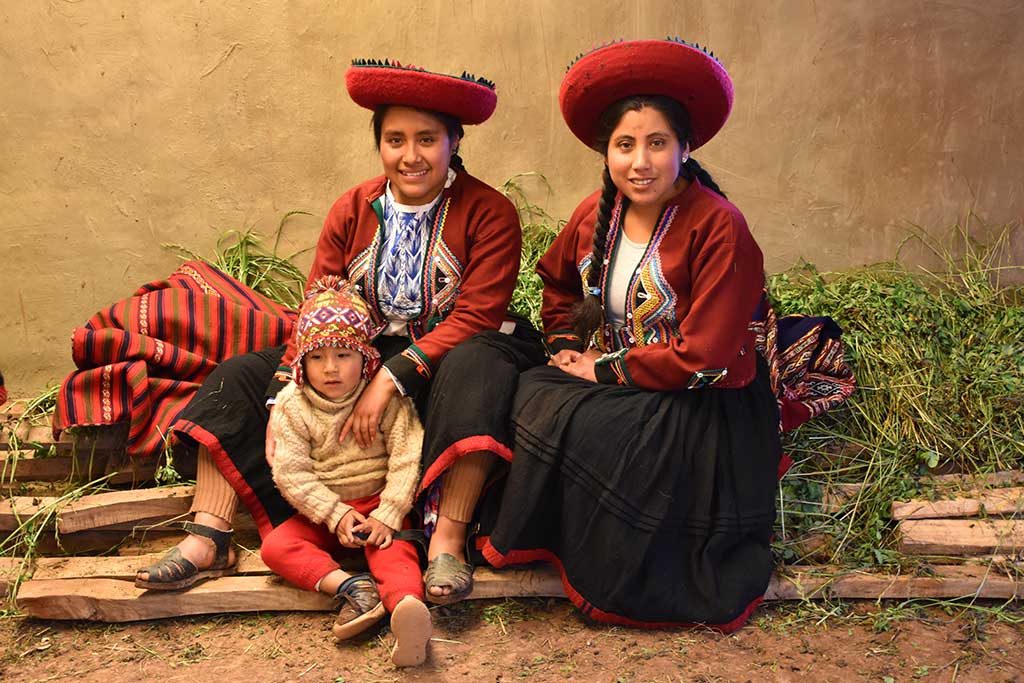
Quechua People
source: maximonivel.com
During the capture of governments by dictatorships in the mid-twentieth century, some Indigenous farmers re-occupied their ancestors’ lands and ousted the landlords. Expropriation of big landowners was part of the agricultural reforms. In Bolivia, the land was redistributed as a private property to the indigenous population.
Political disputes and ethnic persecution continue to be a problem for Quechuas today, as for many indigenous populations all around the world.
What concerns the Culture, despite the Spanish/Portuguese invasion and the imposition of a new religion and a new society structure, survived. The main goddesses and gods that were worshipped during the Inca Empire (YouTube), like the goddess of the Earth, the Pachamama, the personification of the sun, and Inti, are still regarded as divine entities.
The rituals for good harvest as well as other rituals survived too.
Do you speak the language? Is it a surviving language, and is it hard for someone to learn?
I am in the process of learning it, there are few materials I was able to find here in Europe. My mother is travelling to Bolivia this summer, and I have already asked her to find me some grammar and history books so that I can learn.
The term Quechua mostly refers to the language more than to the population, it is still a spoken and surviving language.
I found one grammar once, and I ditched it immediately due to its very hard to comprehend explanations, and I know that this language has declinations, and, as you know Jenny, declinations are my Achilles heel.
I do know your tough relationship with declinations. Could you maybe teach us a few words in Quechua?
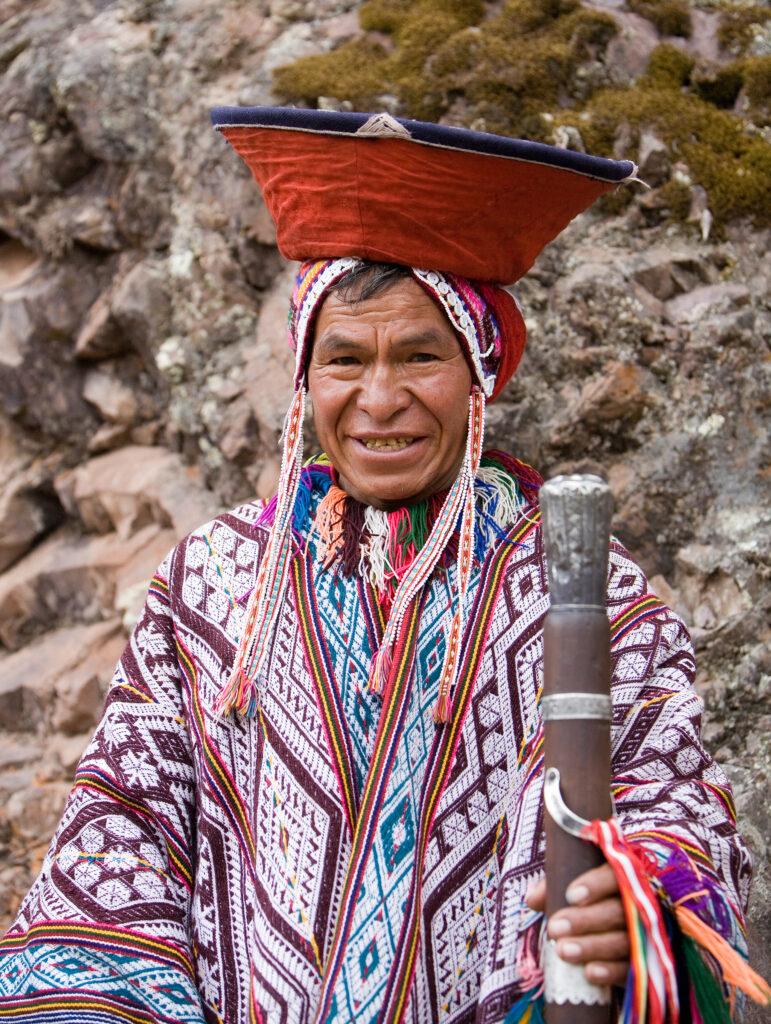
Andean Man
source: en.wikipedia.org
He-he, I must say I am not a very good teacher when it comes to things I am not really experienced with. Quechua still survives, and it’s still talked in the Andes by the indigenous populations.
The Quechua language was the administrative language of the Inca state. It is spoken by millions of people in Peru (about 8 million), Ecuador (nearly 2 million), and Bolivia (about 1 million). Quechua words that have been assimilated into the English language include puma, condor, llama, and coca. Unlike most other native South American languages, Quechua is an official language of Peru, accorded the same status as Spanish. In Bolivia, it is also considered an official language as man others by the Constitution.
The only words that I know are two: ¿Imaynataq kanki ?(how are you?) and Añay (thank you).
Is there a specific kind of food typical of the Quechua people? What do they normally eat?
The most cultivated thing by the Quechua populations is the potato: there are numerous types of potatoes that are cultivated. Also, they eat the meat of llamas (I know it seems cruel because llamas are so cute, but isn’t eating meat cruel too?).
I really do not know much about typical dishes, but I guess there are some, and they are very tasty. Due to my very poor knowledge of this culture, I have poor information concerning the habits of these people. So I asked my mum and these are the dishes that she knows: Pampacu, Fricasi, Lomo saltado, Chino Putti, Ranga, Papalisa.
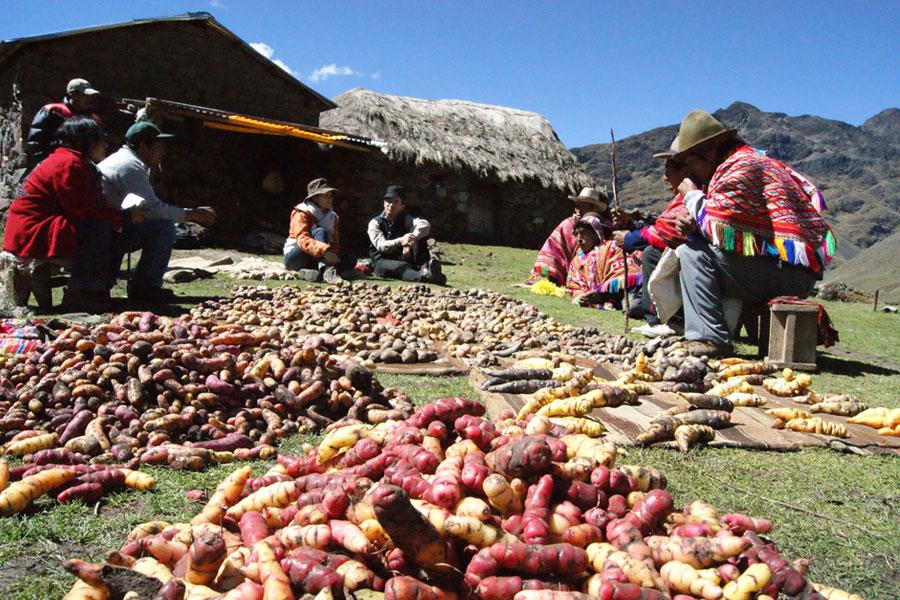
source: enigmaperu.com
Are there any traditions of the tribe? Any festivities, traditional clothing etc.?
The first thing that comes to my mind when thinking about Quechua, is the colourful clothing.
The very colourful tissue used, it’s called Aguayo.
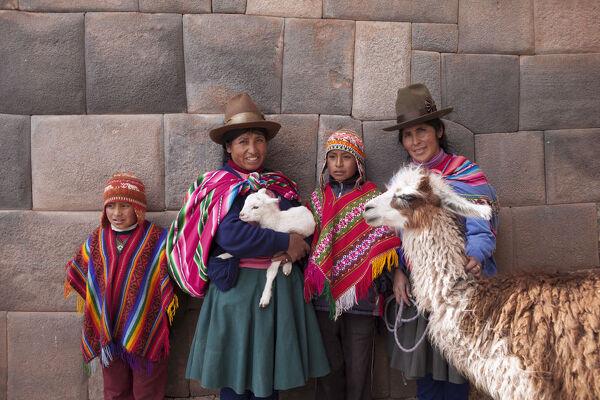
South America, Peru, Cusco. Quechua people standing in front of an Inca wall, holding a lamb and a llama and wearing traditional clothing including a bowler hat, liclla, chullo and poncho – while talking on a cell phone in the UNESCO World Heritage listed former Inca capital of Cusco (MR)
source: DiscoverImages.com
The major festivity for the Quechua population is the Incan Sun Festival, called the Inti Raymi festival. At the Sun Festival, a llama is sacrificed, and the festivals can last up to eight days and involve much food and dancing.
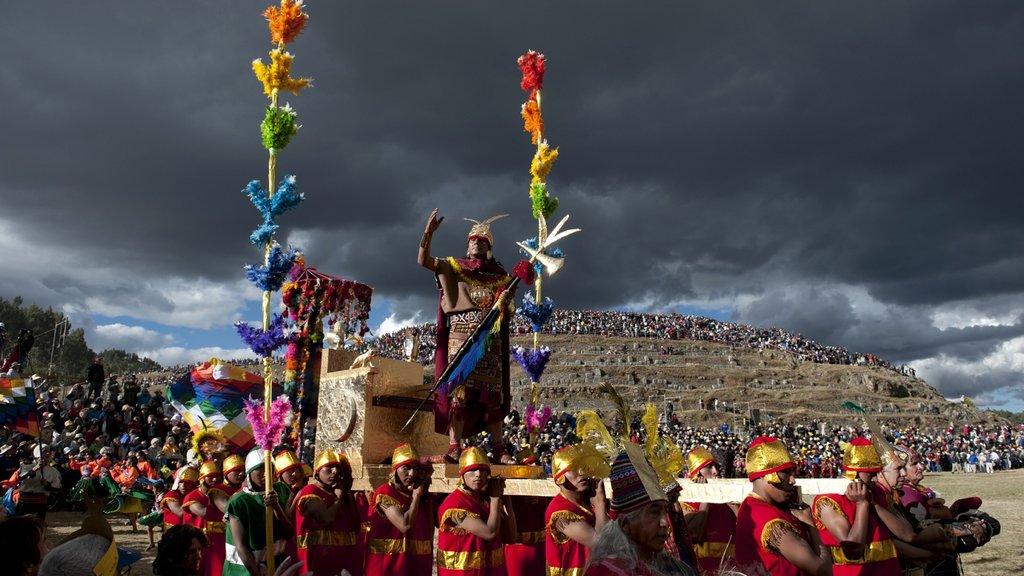
Quechua festivities
source: kimkim.com
To see some more pictures and get some more pieces of information, I would suggest reading this article from the Guardian.
Thank you very much for this wonderful conversation, Alessandra!
If you would like to see more of Alessandra, check her out on Instagram!
If you would like to learn more about the Quechuan people, I would suggest watching this documentary from the YouTube channel TRACKS:
If you would like to listen to some Quechua music, sung in the Quechua language, I would suggest this playlist:
source of header image: SL-Photography/Shutterstock
Η τυπική σας 23χρονη -πια-φοιτήτρια στην οποία δόθηκαν τα μέσα να εκφράσει τις ιδέες, τις απόψεις και τους προβληματισμούς της. Γεννημένη στην Ελλάδα από Πολωνή μητέρα και Έλληνα πατέρα, σπουδάζω στη Φιλοσοφική Σχολή Αθηνών. Αγαπώ τα ταξίδια, ενώ δε χάνω ευκαιρία για νέες εμπειρίες και γνωριμίες. Enjoy!
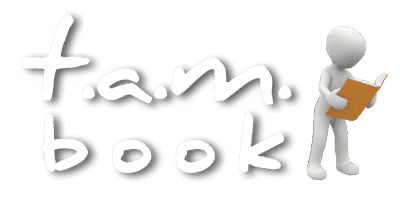


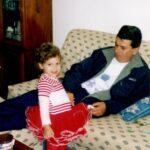
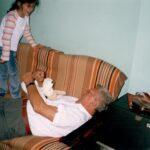



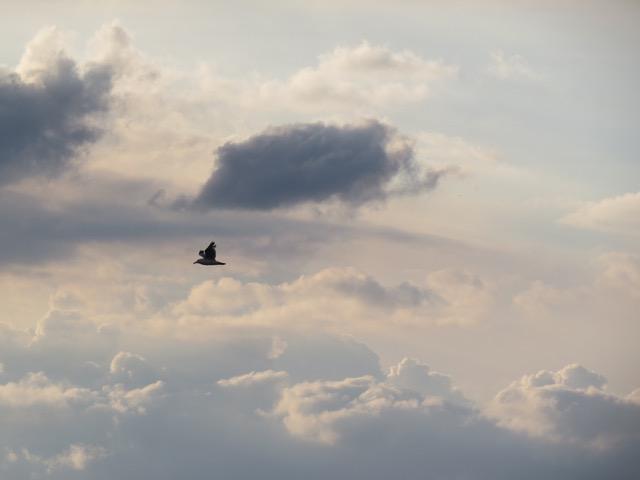
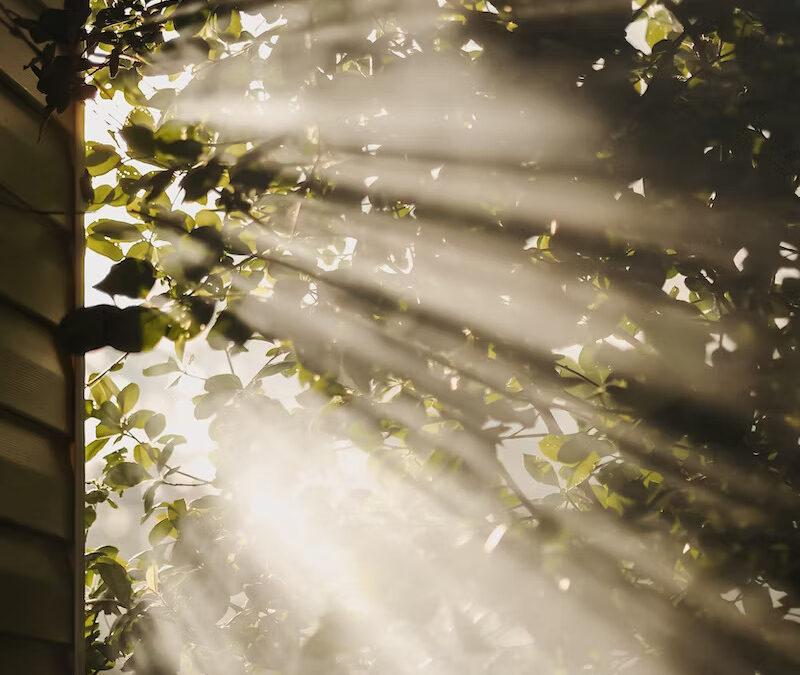

0 Σχόλια